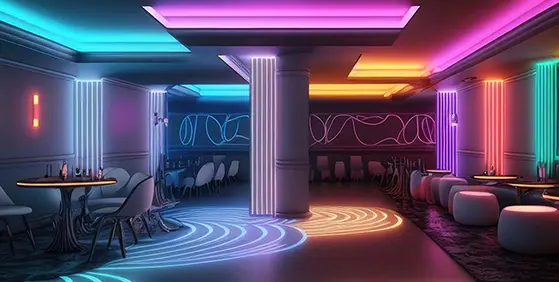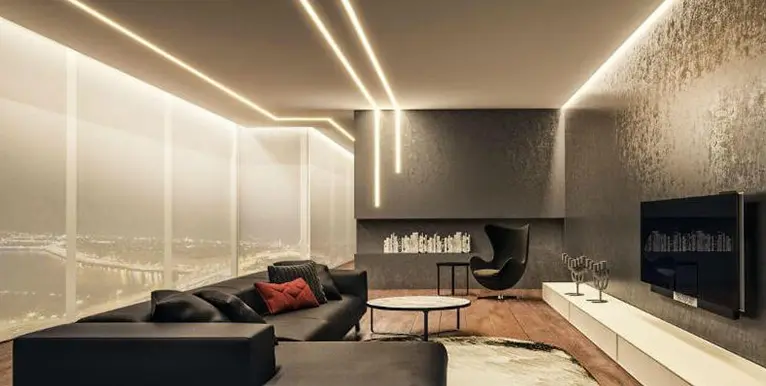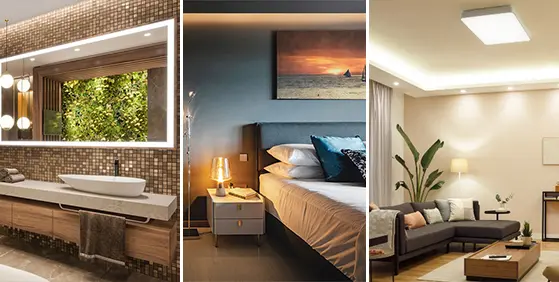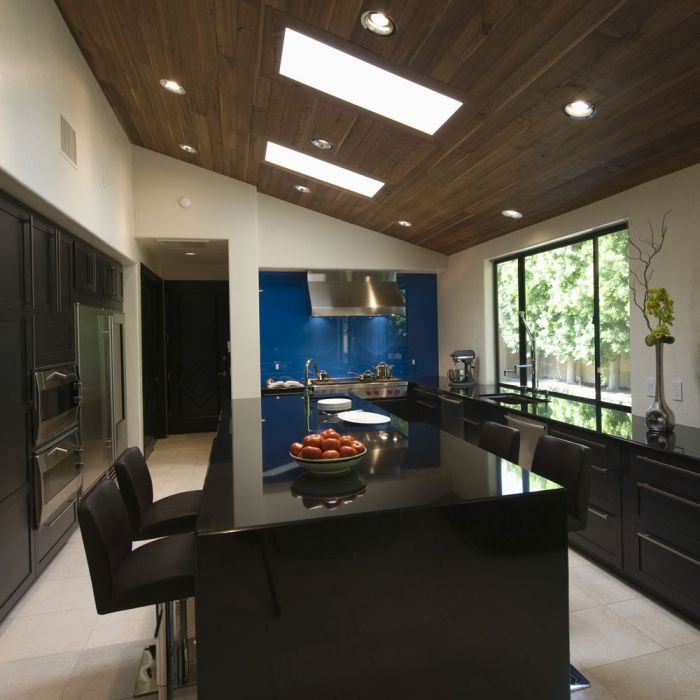The Ultimate Kitchen Lighting Buying Guide
They say the kitchen is the heart of the home, often used for so much more than just cooking a meal. It’s where the family gather to eat together, where you can help the kids do their homework and have a coffee with friends. It’s where you feed the cat and take out the trash and if all the best parties end up in the kitchen then you need to be prepared for that too.
What we’re saying is that a kitchen can be the most important (and difficult) room in your home to light because it has so many functions and needs practical lighting solutions that cover all of them.
In many ways the larger your kitchen the easier it is to light. A large kitchen can be zoned by function: cooking, eating, chilling, doing day-to-day family tasks… and lit accordingly. Smaller kitchens are harder to manage but by taking a layered approach to lighting design, and using controllable LED Kitchen lighting, it’s amazing what can be achieved even in a small space.
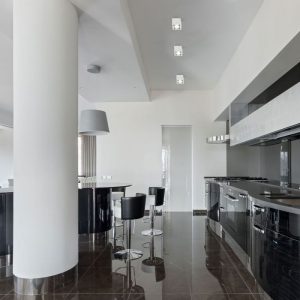
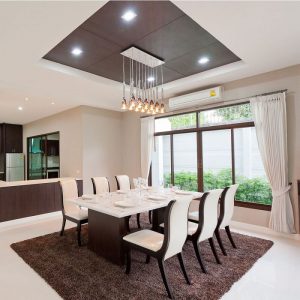
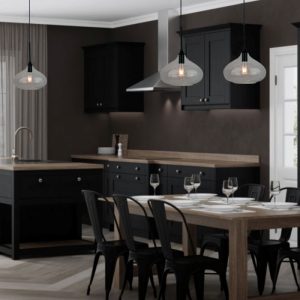
What is the best lighting for kitchens?
As we’ve said, think zoning, and in each zone decide if you need task, feature or mood lighting.
Task lighting is bright and functional. Think kitchen worktops, sinks, appliances, food storage and anywhere associated with doing something functional.
Mood lighting is for the more relaxed areas of the kitchen – where you chill with friends or family, and also where you calm down and enjoy eating the meal you just spent hours preparing.
Feature lighting is for those parts of the kitchen you want to highlight – islands, peninsulas and dining tables are all ideal locations for an extravagant and eye-catching feature light that draws family and friends into the heart of your home.
Task lighting should be bright but discreet so think about recessed LEDs aimed downwards at work surfaces and LED strip lights under cabinets that overhang work surfaces. Mood lighting should also be discrete and calming so look at wall-mounted sconces, recessed ceiling lights or reflected light using up-lights, bouncing light off of a brightly painted ceiling.
You can even add mood lighting to an island or peninsula with strip LED lighting attached, hidden, on the underside of overhanging countertops to give a warm glow and that “floating” effect. And feature lighting is simple – large statement pendant lights in striking designs and colours will immediately draw the eye to where you want them.
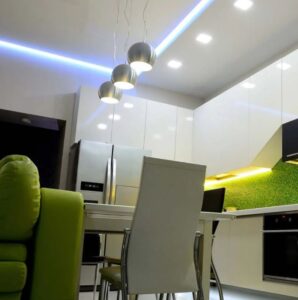
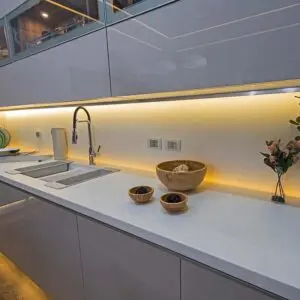
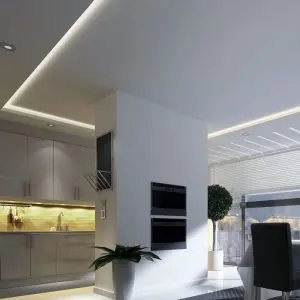
How many Lumens do I need in a kitchen?
A good rule of thumb is 3,000 to 4,000 Lumens for mood or ambient lighting in a kitchen/dining room and 7,000 to 8,000 Lumens for task lighting. By mixing and matching brightness to the functional zones in your kitchen you can begin to paint with light, creating moods and brightness depending on which you have on at a given time.
LED wattage (power) dictates how bright the LED bulbs will be in terms of Lumens but LED wattage diggers considerable from traditional halogen lighting wattage because LEDs use considerably less power, which is great in these days of rising energy bills! A 10W LED is equivalent to a 60W standard lightbulb and both will give out 700 Lumens.
When it comes to planning your layered kitchen lighting it’s also worth thinking in terms of Kelvin (K) which is the measurement of colour temperature and is commonly quoted when talking about LEDs. 3,000K gives a yellower light while a higher K doesn’t give a brighter light but a whiter one with numbers above 5,500K giving a blue-white.
Are LED lights bright enough for a kitchen?
An 18W LED light is equivalent o a traditional 100W bulb and both give around 1,300 Lumens of brightness. Smart Lighting Industries provide LED lighting for your kitchen from 2W up to 36W so you’re guaranteed to find suitable LED lighting for all areas of your kitchen, regardless of type and function. Smart Lighting Industries specialise in LED lighting and have a range of choices suitable for kitchens of all sizes.
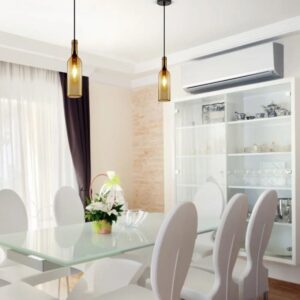
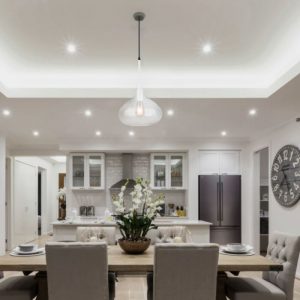
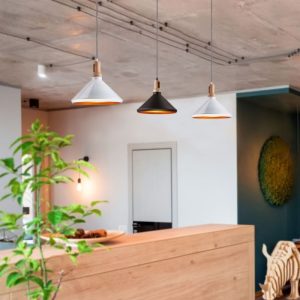
What colour light is best for your kitchen?
This is where you can really get creative, giving your kitchen a layered look by “painting” with light. Consider using bright white, daylight LED fixtures for task and feature lighting, contrasted with warm yellow for mood lighting. By switching on one or both zones at the same time, you get a layered look to your kitchen that makes the room’s lighting a feature in itself.
You can also consider programmable coloured LED lighting strips for when the party really does end up in the kitchen.
How do I light a tiny kitchen?
Overall making a smaller kitchen brighter will make it feel bigger, but that doesn’t mean you should ignore the idea of layered lighting here either. LED spotlights, under counter and under cabinet LED lighting can still give a small kitchen depth and recessed ceiling lighting with wider beams means you can flood your small kitchen with light without worrying about low ceilings.
You can use spots and recessed lighting to bounce light off of reflective surfaces like bright marble or cheaper quartz composite work surfaces, or even put a mirror in the room and reflect ceiling lights off of that.
If there’s space in the corner for a bistro-style table, hanging a feature pendant light above it (on a short cable if the ceiling is low) makes a cosy nook for eating breakfast or chatting with a friend over coffee or a glass of wine.
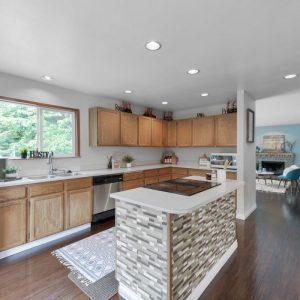
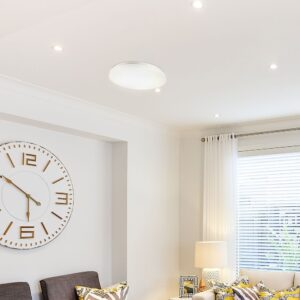
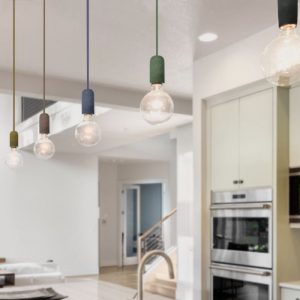
Mix, match and plan ahead
Don’t forget that one person’s task lighting may be another’s feature. If you’re a gastro-nought with a top-of-the-range chef’s cooking range, you need bright light to cook by, but this may be your proudest feature in the kitchen – so think about feature lighting, even though it’s a task area. And your easiest LED mix idea is dimmable lighting. You want a calm ambience at your dining table when you have guests around but when it’s the kids’ dinner time, you want it bright to make sure they aren’t slipping their broccoli to the dog. With a dimmable LED feature pendant light above the dining table, you’re completely covered.
And finally – plan ahead. Electrics for lighting need to be installed before plastering and painting to keep them hidden, so get your lighting plan sorted early. Take a look at Smart Lighting Industries’ website now and get your dream kitchen lighting underway.

